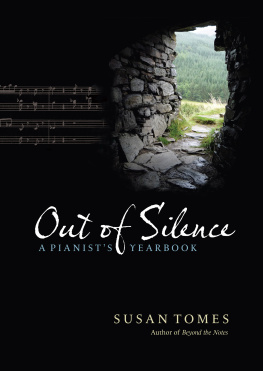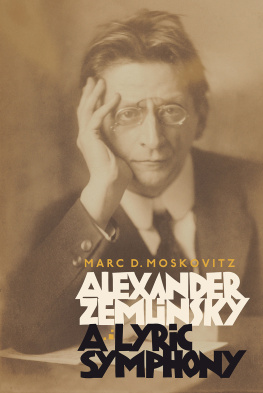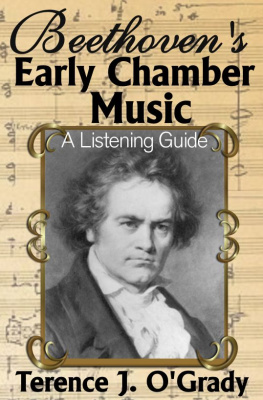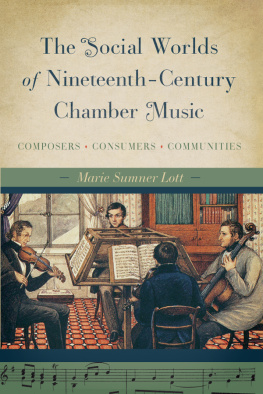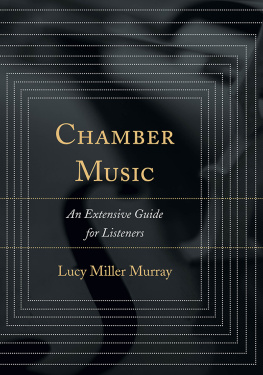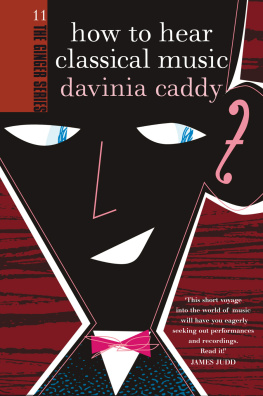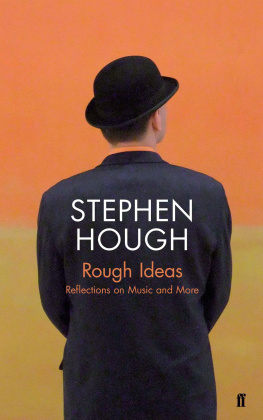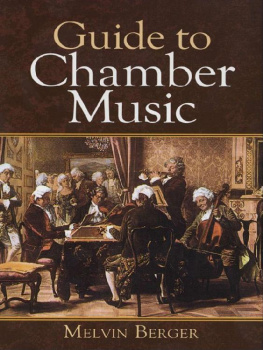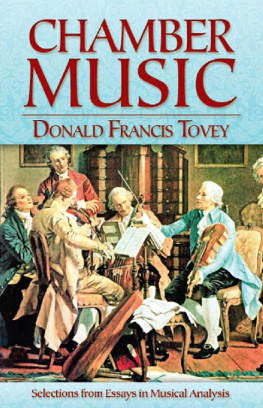A Portable Concert Hall: the Domus Diary
My Domus diary was written twenty years ago and has not been revised (except for abridging it) for publication. Its way of expressing things, typical of me then, is not quite typical of me now. And of course the same applies to everyone whose opinions and behaviour are described in the diary. However, I have kept the original wording because it conveys a sense of the involvement and commitment we all felt at the time.
The diary entries were often written moments after the incidents described. We were all in the thick of things, and probably lacked objectivity indeed, if wed possessed objectivity we wouldnt have been there in the first place. So I hope they will be read as despatches from the musical front, written in the midst of a huge endeavour when none of us had much experience of our profession, and giving a flavour of time and place that was precious to all involved. Indeed, the time we spent with Domus was important in many different ways, and had a lasting influence on us all.
This is the story of the first years of Domus, a group that later travelled the world as a piano quartet, and won numerous record awards. Its original members are now spread out internationally, and follow distinguished musical careers as soloists, conductors, chamber musicians and members of symphony orchestras.
Domus was formed in 1979 by a group of young professional musicians who had met up at the International Musicians Seminar, founded by the Hungarian violinist Sandor Vgh, at Prussia Cove in Cornwall, England. Its founder members were Felix Wurman (cello), Robin Ireland (viola), Krysia Osostowicz (violin), Richard Lester (cello) and me, Susan Tomes (piano). We were then at the beginning of our professional careers, and were already slightly dismayed at the lack of contact we had with our audiences. We had all been educated to believe that music was a potent form of communication, and we expected to be closely in touch with our listeners just as one is when learning and practising music in the home but it was not so in the concert hall.
We were united by the feeling that formal concerts often inhibited both players and listeners, and also by the feeling that concert-giving should not be so entirely dislocated from the rest of the days activities. Admittedly, many performers find the Otherness of concerts both necessary and compelling because it gives the sense of a special occasion, and draws the best out of them. But this Otherness has a life of its own, independent of the performers; it doesnt always amount to the feeling of a special occasion, but sometimes just feels stiff, and makes people feel they are not free to behave normally. We felt this very much when we experienced the formal atmosphere of many long-established concert series. Much as we longed to be invited to play in them, we also regretted the air of constraint that seemed to descend on the audience.
The idea of building our own portable concert hall emerged from a series of conversations during the seminars at Prussia Cove. These courses take place twice a year in an incomparably beautiful setting by the sea, and attract student and professional musicians from around the world. As the constant theme of the classes was communication with the music, with one another, with audiences it was natural that we all discussed how what we were learning could be incorporated into our budding professional lives. Gradually we all confessed we were worried that professional musical life was less communicative in several senses than we had hoped it would be, and were concerned how little contact there was with listeners. During mealtime and late-night conversations we came up, almost jokingly, with the idea that we should get together and build our own concert venue, where we could do things as we liked. Weve got to build a portable concert hall! was the merry refrain.
Our idea was to put up our portable hall in places where there were no concert halls, and to give informal concerts of chamber music. We wanted to cut through the stiffness of the atmosphere that sometimes prevails in traditional concert buildings. We also thought that if nobody was obliged to behave like this or that, we could share our love of chamber music at close quarters with many new kinds of listeners who would grow to love it as we did.
When I look back on it, I see that we were brought together not so much by musical compatibility as by idealism and shared ideas. Curiously, these dont always go together. People can go well together musically without going well together socially, and vice versa. In our case, we were a peculiar mixture of practical, spiritual and intellectual qualities, though the shared wish to live a different kind of musical life brought us close together, close enough to become very good chamber music partners in due course. In the beginning, however, it was a philosophy that bound us together.
The idea of building a portable concert hall might never have become a reality without the inspirational adventurousness of our American cellist Felix Wurman. Felix had always had an extraordinary gift for starting exciting new projects and motivating people to become involved with them. When the idea of the portable concert hall came up, he immediately thought of the geodesic dome structure, which he had studied at school and had always wanted to build in earnest. It was Felix who translated our ideas into reality by going off and working out how to gather the materials for a prototype dome. The rest of us might eventually have figured out how to get our hands on some kind of large tent, but I dont think we would ever have hit on the idea of a geodesic dome the lovely shape that became synonymous with the project, and inspired the groups name, Domus. The name carried a double significance: it was partly a reference to the dome itself, and partly to the Latin word for home, showing how we felt about the dome.
It couldnt be just any old kind of tent, said Felix, who built the first dome in the cellar of his cello teachers house in Germany in 1980. It just had to be a dome. The first dome was made of plastic tubes, a rudimentary connecting system for them, and a cover made from a pink silk parachute kindly donated by the RAF. Once we had seen that a geodesic dome was entrancingly beautiful, but also could easily blow over the edge of a cliff, as it once nearly did in Cornwall, we set about reproducing it in sturdier materials. Our dome seated 200 people, and obviously it had to be safe.
Having swapped plastic for aluminium tubes and the parachute for a PVC cover, Felix found us a Bedford van in which to transport it. Eventually we also acquired a specially made trailer, the size of a horse-box, in which to carry a piano. At first we had an upright, but later we graduated to a grand piano mad as that seems. The trailer had an ingenious, if cumbersome design, which allowed its sides to be unfolded, and had uprights that dropped down to become legs, thus forming a concert platform. The piano remained on the trailer throughout, either lying on its side for transport purposes, or turned onto its legs when the trailer became a stage.
Domus had to learn the hard way that a breathtakingly simple shape is not breathtakingly simple to build. We did everything ourselves partly on principle, and partly because our budget never allowed us to employ any outside help. We put up and took down the dome, did all the technical maintenance, did the driving, all the administration, all the concert organisation, and all the publicity, such as it was as well as all the playing. Thus we were all thrown in at the deep end of professional life, for which our training as performing musicians had scarcely prepared us.



